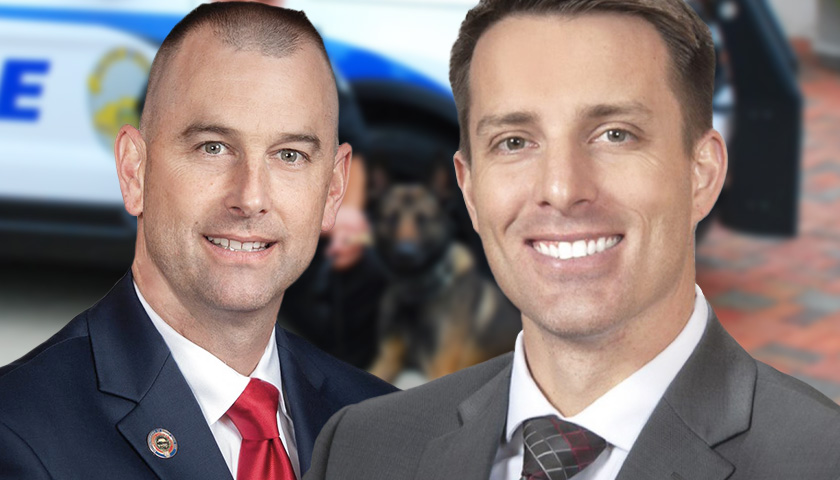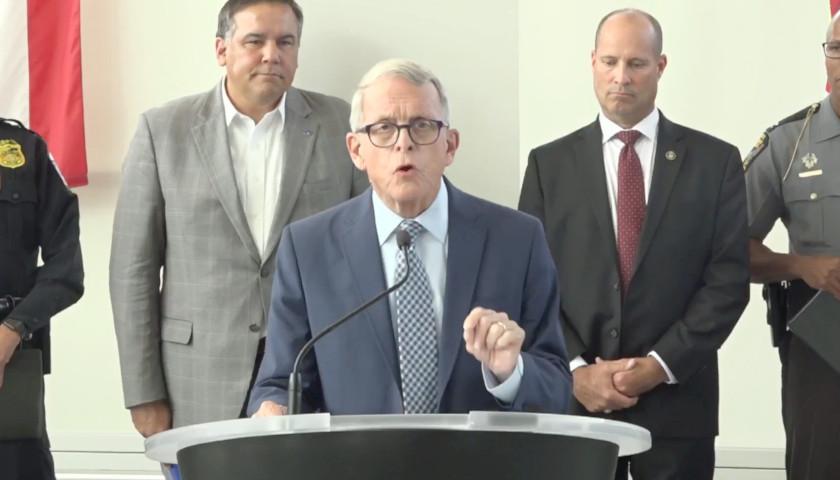A Republican-backed bill that will authorize emergency medical personnel to transport injured police dogs by ambulance heads to Governor Mike DeWine’s desk for signature.
House Bill (HB) 392, sponsored by State Representatives Ron Ferguson (R-Wintersville) and Kevin Miller (R-Newark), expands the ability of a medical professional to allow for life-saving transportation of a K-9 to a veterinarian center for treatment.
“K-9s are an integral part of our police force, so we must prioritize their safety and survival. I am grateful to the members of the House and Senate Transportation Committees for their help in moving this bill forward,” Miller said.
Current state law already permits certain medical services to be provided to an injured K-9 at the scene of an emergency, such as opening and manually maintaining an airway, giving mouth-to-snout or mouth-to-barrier ventilation, administering oxygen, managing ventilation by mask, controlling hemorrhage with direct pressure, immobilizing fractures, bandaging, and administering naloxone hydrochloride.
The legislation will now allow transporting a K-9 injured in the line of duty to a veterinarian care center for treatment.
The bill stipulates that a K-9 will only be transported through emergency services if the dog is injured in the line of duty and no other human at the scene requires emergency medical transport.
According to Miller, police K-9s play an integral role in our state’s communities. If the circumstances are right, they should receive the correct medical attention to ensure their safety and well-being.
Law enforcement personnel train police dogs to assist them in various tasks. Common K-9 duties include suspect tracking and apprehension, narcotic and explosive detection, and search and rescue. Some police K-9s are single-purpose, meaning they have only one job, like finding illegal drugs. Other police dogs are dual-purpose, meaning they train in multiple tasks.
The Ohio State Highway Patrol (OSHP) has over 30 K-9s. According to Miller, depending on the cost of the dog and the training involved, it could easily be a 15-17 thousand dollar investment.
“K-9s must endure intense training before they are deemed ready for service and that training comes at a large expense. As a result, it is imperative that we protect the investment we put into our canines, and this legislation ensures that is the case,” Ferguson said.
Currently, a handler’s vehicle transports an injured canine for medical attention. According to Miller, a squad would be very helpful because there is not enough room in the kennel area for both the handler and the K-9.
According to Art Fowler Jr. Chief of Police for the Wintersville Police Department, this legislation is important as K-9s are crucial to law enforcement success.
“These dogs are an invaluable asset to our department and community, and the services they provide are crucial to the success of our department’s mission,” Fowler said.
The legislation also ensures first responders transporting K-9s are immune from civil damages, criminal prosecution, and professional disciplinary action as long as they do not act with willful or wanton misconduct.
Other states, such as Florida, Illinois, Michigan, Mississippi, and New York, have enacted similar legislation. Additionally, legislation about this issue is currently under consideration in Arkansas, Connecticut, Massachusetts, and Rhode Island.
– – –
Hannah Poling is a lead reporter at The Ohio Star and The Star News Network. Follow Hannah on Twitter @HannahPoling1. Email tips to [email protected].
Photo “Ron Ferguson” by Ohio House of Representatives. Photo “Kevin Miller” by State Representative Kevin D. Miller. Background Photo “K-9 Unit” by Grove City Ohio Police.








